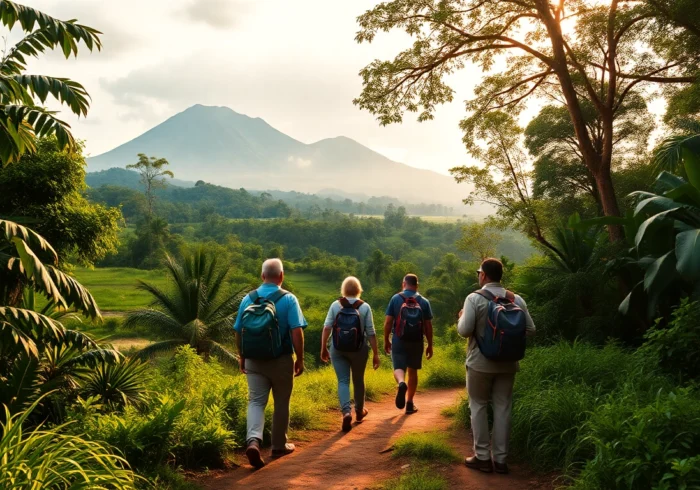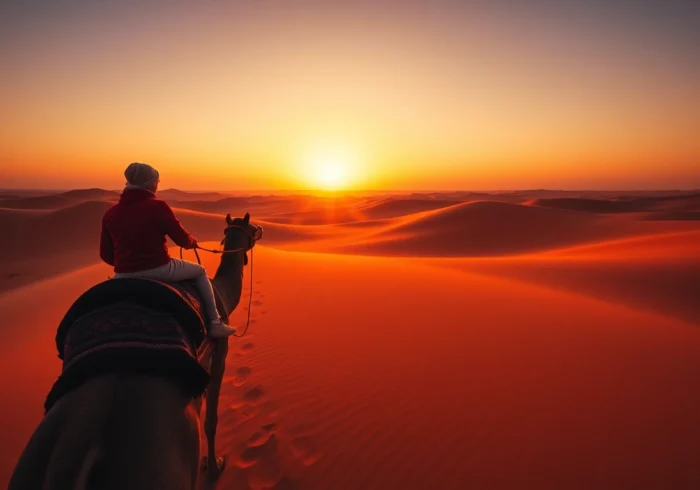Introducing the Best Trek Trails in Indonesia
Indonesia, with its vast archipelago and diverse landscapes, offers some of the most spectacular trekking experiences in the world. Whether you’re an avid adventure seeker or a casual explorer, the country’s rugged terrains, lush rainforests, and towering volcanic peaks create an inviting environment for every level of trekker. When considering a trekking adventure, choosing the right equipment is crucial—particularly a reliable bicycle or gear suited for challenging terrains. Discover the fun of riding with our wide range of electric, mountain, road, city, gravel, kids’, and certified pre-owned bikes by visiting Trek. This guide will explore Indonesia’s top trek trails, essential planning tips, cultural highlights, safety strategies, and how to make your experience unforgettable.
1. Planning Your Trekking Experience in Indonesia
1.1 Why Choose Trek Bikes for Mountain Adventures
Trek bikes are renowned worldwide for their durability, innovative design, and versatility in tackling a variety of terrains. For treks in Indonesia’s diverse landscapes—including steep volcano slopes, muddy rainforest paths, and rocky mountain trails—Trek bikes provide the reliability and performance needed to conquer challenging routes. Equipped with advanced suspension systems, lightweight frames, and customizable components, Trek bikes enhance rider control, comfort, and safety—making them an ideal choice for mountain adventures across Indonesian islands such as Lombok, Bali, Sumatra, and Flores.
Moreover, Trek’s extensive range of models allows you to select a bike tailored to your skill level and specific trekking conditions, from mountain bikers seeking adrenaline-pumping descents to casual trekkers exploring scenic routes. Investing in proper gear and a trusted brand like Trek can significantly elevate your trekking experience, ensuring safety, efficiency, and enjoyment.
1.2 Overview of Popular Trek Routes across Islands
Indonesia boasts numerous acclaimed trekking routes, each offering its unique blend of natural beauty and cultural immersion:
- Mount Rinjani, Lombok: The second-highest volcano in Indonesia, Mount Rinjani attracts trekkers interested in challenging climbs and stunning caldera views. The Rinjani Trek typically spans 2-3 days, with options to relax in nearby hot springs.
- Kawah Ijen, East Java: Famous for its surreal blue flames and sulfur mines, Ijen offers a relatively accessible trek that culminates at a surreal crater lake, ideal for both beginners and seasoned hikers.
- Mount Bromo, East Java: Known for its otherworldly sunrise views, the Bromo Tengger Semeru National Park offers vantage points and easy hikes suited for families and casual explorers.
- Gunung Leuser National Park, Sumatra: For wildlife enthusiasts, trekking into the rainforest to observe orangutans and diverse flora provides a unique biodiversity experience.
- Kelimutu, Flores: The tri-colored volcanic crater lakes of Kelimutu are accessible via a scenic trek that combines natural wonder with stunning vistas.
Each route offers different challenges and rewards—choosing the right trek depends on your fitness level, experience, and interests. Regardless of the trail, preparation and proper gear are vital.
1.3 Essential Gear and Preparation Tips
Preparing adequately for your Indonesian trek involves selecting the right gear, understanding environmental conditions, and planning for contingencies:
- Clothing: Layered, moisture-wicking clothing suitable for varying temperatures and weather conditions. Lightweight waterproof jackets are advisable.
- Footwear: Durable, comfortable hiking boots with good ankle support for uneven terrains.
- Navigation tools: GPS devices, maps, and portable chargers ensure you stay on route.
- Safety equipment: First aid kit, high-visibility gear, and personal safety devices.
- Hydration and nutrition: Ample water supplies, electrolyte packets, energy bars, and lightweight snacks.
Additionally, acclimatization to altitude, physical fitness, and awareness of local environmental and cultural considerations can greatly enhance your trek’s success. Connecting with local guides familiar with Indonesian trails can provide invaluable insights and safety.
2. Navigating Local Regulations and Permits
2.1 Selecting the Ideal Trek Route Based on Skill Level
Choosing a route aligned with your experience ensures a rewarding and safe trek. Beginners might prefer shorter, less demanding trails such as Kelimutu or Ijen, while advanced trekkers can challenge themselves with summit ascents like Mount Rinjani or Mount Semeru. Recognize your physical capabilities and seek guidance from local authorities or tour operators to select appropriate routes.
2.2 Navigating Local Regulations and Permits
Many Indonesian national parks and mountain areas require permits for trekking, which help conserve natural resources and ensure sustainable tourism. Permits are often obtainable from park offices or authorized agents—procurement procedures vary depending on the region.
For example, climbing Mount Rinjani necessitates a trekking permit, guide service, and sometimes registration through official channels. Failure to secure proper permissions can result in fines or access denial. Planning ahead and working with certified local guides simplifies the process, supports local economies, and enhances safety.
2.3 Tips for Safety and Sustainability
Prioritizing safety involves understanding weather patterns, trail conditions, and respecting local wildlife. Carrying leave-no-trace essentials helps maintain Indonesia’s pristine environments, ensuring future generations can enjoy these treasures. Engage with local communities respectfully—support local artisans, consume responsibly, and leave minimal environmental impact.
Moreover, educate yourself on emergency procedures, local customs, and health precautions, such as vaccinations or altitude sickness management. Utilizing local guides and adhering to regulations minimizes risks and promotes sustainable trekking practices.
3. Local Culture and Scenic Highlights Along Trek Routes
3.1 Discovering Hidden Gems and Natural Landmarks
Indonesia’s diverse culture enriches every trek with vibrant traditions, festivals, and historical sites. During your journeys, explore hidden gems such as traditional villages, ancient temples, and unique landscapes. For instance, along the Rinjani trail, visit local Sasak villages to experience indigenous crafts and cuisine.
Natural landmarks like waterfalls, hot springs, and panoramic viewpoints accentuate each trek. Taking time to appreciate these sights elevates the adventure beyond physical exertion, immersing you in Indonesia’s multi-layered beauty.
3.2 Immersing in Indonesian Culture During Your Trek
Local customs and ceremonies are often intertwined with natural sites. Engage with local communities respectfully, participate in traditional rituals if invited, and learn about indigenous ways of life. In Bali’s trekking areas, witness offerings and cultural performances that highlight spiritual connections to the land.
Sampling local cuisine, visiting markets, and staying in homestays can deepen cultural understanding and make your trek more meaningful and authentic.
3.3 Planning Cultural Stops and Rest Days
Incorporate cultural stops into your trekking schedule to balance physical activity with cultural immersion. Rest days in local villages or town centers enable acclimatization and allow time to explore historical sites or participate in community activities.
Planning ahead for these stops ensures a smooth, enriching experience while respecting local norms and customs.
4. Expert Tips for a Successful Trek with Your Trek Bike
4.1 Maintaining Your Bike on Long Trips
Proper bike maintenance is essential for long-distance trekking. Carry basic tools—multi-pliers, tire levers, spare tubes, chain lube—and familiarize yourself with minor repairs. Regularly inspect tires for wear, keep the chain lubricated, and ensure brake systems function optimally.
Use lightweight, portable repair kits to address common issues in remote areas, where access to professional service is limited. Maintaining your Trek bike’s performance ensures safety and allows you to focus on enjoying your journey.
4.2 Choosing the Right Trail Accessories
Equip your bike and yourself with trail accessories tailored to Indonesian terrains. This includes sturdy water bottles, hydration packs, comfortable cycling gloves, and protective gear like helmets and knee pads. Consider adding handlebar bags for storage and lights for early mornings or dusk rides.
Additional accessories such as GPS-mounted devices and rugged tires designed for mixed terrains improve navigation and durability on rough trails.
4.3 Maximizing Performance and Enjoyment
Prepare physically through regular training; focus on endurance, core strength, and flexibility. Adjust your riding technique to suit terrain changes, shifting gears efficiently and controlling speed on descents.
Staying alert, pacing yourself, and taking regular breaks prevent fatigue and enhance photo opportunities at scenic spots. Remember, a well-maintained bike paired with appropriate gear turns a challenging trek into a memorable adventure.
5. Testimonials and Inspiration from Indonesian Trek Enthusiasts
5.1 Stories from Experienced Trek Riders
Many seasoned trekkers have shared inspiring stories about Indonesia’s trail adventures. Jane from Australia recounts her Rinjani ascent, emphasizing the breathtaking views and the camaraderie formed with fellow hikers. Similarly, local guides highlight encounters with rare wildlife and experiences in authentic villages.
5.2 Photos and Videos of Memorable Journeys
Visual content captures the awe-inspiring landscapes, from volcanic craters to lush forests and sunrise vistas. High-quality photos and drone videos serve as a powerful testament to Indonesia’s natural majesty, motivating others to embark on their own journeys.
5.3 How Trek Bikes Enhance Your Adventure
Testimonials consistently underline the importance of dependable bikes like those from Trek. Users praise their durability, smooth performance, and comfort on rugged paths. Whether conquering mountain trails or casual scenic routes, a Trek bike can significantly improve safety and enjoyment, transforming trekking expeditions into truly unforgettable experiences.

